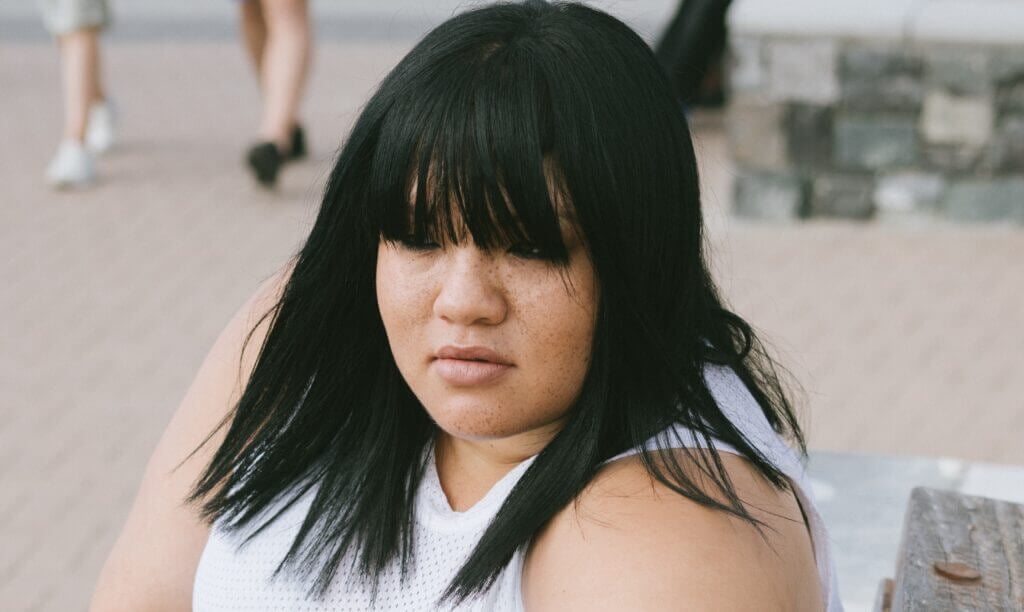Stop Smoking
Treatments that help you quit for good.
Discreet delivery
Canadian clinicians
Stopping smoking isn’t easy, but the benefits are huge. You can add years to your life, and reduce your chances of disease as you get older.
We can help you find a way to quit smoking for good. Talk to us to get tailored recommendations, and order your stop smoking treatment online.
The first thing you need to quit smoking is the will to become a non-smoker. The second is to get advice on how best to do that. There’s no one size fits all approach for quitting smoking, but there are some tried and trusted methods that we can help you with. Prescription treatments like Champix and Zyban have shown to be effective at helping many people to quit.
There are lots of ways, so it’s a matter of finding the right one for you. Many statistics show that you’re more likely to quit with the help of stop smoking aids and treatments, but with so many available, finding the right one might take a little time. Some of the most popular include medications and nicotine replacement therapies (NRT).
Stopping smoking can have a profound effect on your health and your bank balance (usually you’ll spend less on cigarettes and have more money). It significantly reduces the risk of various cancers and cardiovascular diseases. But even this is just scratching the surface in terms of the health effects associated with smoking. Food tastes nicer. Your skin improves. In fact, there’s barely a part of the body that isn’t affected by it.

How we source info.
When we present you with stats, data, opinion or a consensus, we’ll tell you where this came from. And we’ll only present data as clinically reliable if it’s come from a reputable source, such as a state or government-funded health body, a peer-reviewed medical journal, or a recognised analytics or data body. Read more in our editorial policy.
It’s been estimated that it can take some smokers 30 or more attempts to quit. So if you have a few hiccups along the way, that’s totally normal. But if you stay determined, there’s every chance that you can stop smoking forever.
And once you’ve quit, you’ll likely notice some positive changes in the body over time. These little milestones are massively beneficial to your health, and knowing what’s going on inside (and not solely focusing on the negative experiences of quitting smoking), can be a great motivator. This is where the stop smoking timeline comes in.
It takes just 20 minutes for signs of improvement to take effect as your heart rate will return to its normal rate. After eight hours, carbon monoxide levels are halved in the body and your oxygen levels are also increased. The carbon monoxide leaves your body completely after two days and your lungs start to recover. Your sense of taste and smell start to return to normal too. And the following day, you’ll find that your bronchial tubes can relax again, helping you to breathe more easily.
Over the next few weeks, the blood flow to your heart will increase considerably and after just three to nine months, any coughing and wheezing will disappear as your lung capacity increases. Long term, it takes just a year for your risk of a heart attack to have halved, and in ten years, the same for lung cancer risks.
As an added bonus, you won’t spend as much on tobacco. So you not only have the energy to do more, you’ll be able to better afford it too.
Smoking increases your risk of various cancers, including cancers of the throat, mouth, liver, lungs, stomach and pancreas. And this is just a fraction of the cancers associated with smoking. Heart disease, strokes, various vascular diseases, COPD (chronic obstructive pulmonary disease), pneumonia and impotence in men can also all be caused by smoking.
It’s not just your own health as a smoker that’s at risk. Passive smoking (breathing in the smoke of other peoples’ tobacco) increases your chances of developing all of the conditions mentioned above by as much as a quarter, with young people at particular risk.
Quitting cold turkey can be very difficult, and the NHS website suggests that just 3% of people that try successfully quit manage it, but separate studies suggest it’s the most effective method in some cases. The trick is to find the best approach for you and make sure you get the right support, whatever route you take.

How we source info.
When we present you with stats, data, opinion or a consensus, we’ll tell you where this came from. And we’ll only present data as clinically reliable if it’s come from a reputable source, such as a state or government-funded health body, a peer-reviewed medical journal, or a recognised analytics or data body. Read more in our editorial policy.
They might not be for everyone, but prescription treatments have been shown to be highly effective for many people who have successfully quit smoking.
It should be noted though that they will not work alone; a commitment to becoming a non-smoker and some willpower are still needed if you choose to stop smoking this way.
The two main prescription treatments to stop smoking are Champix and Zyban, which work in different ways. These are stop smoking tablets that are taken orally.
Champix is the brand name of the drug varenicline. It works in two ways. The first is by reducing the severity of cravings that makes quitting smoking so difficult, and the second is by minimising some of the more problematic symptoms, such as mood swings and insomnia. A Champix stop smoking course usually takes around nine days before you notice its effects and lasts for 12 weeks.
Zyban is the brand name of the drug bupropion and was originally prescribed to treat depression. The science behind how it works isn’t entirely clear, but it’s understood that it has an effect on the part of the brain that’s connected to addiction. It should be started a week or two before you quit smoking and the course lasts for around eight weeks.
As well as stop smoking treatments, there are stop smoking aids that can usually be bought over the counter. One of the most commonly used are NRTs (nicotine replacement therapies). These work (you guessed it) by replacing the nicotine you’re no longer getting from smoking with products that help to wean you off the habit. They come in patches, gums, inhalators, tablets, lozenges and oral or nasal sprays, so there’s something for everyone.
Another way to wean yourself off smoking is E-cigarettes, which is an electronic device that releases nicotine (but without many of the harmful chemicals in tobacco). These are essentially another form of NRT, so they shouldn’t be used alongside the therapies listed above.

How we source info.
When we present you with stats, data, opinion or a consensus, we’ll tell you where this came from. And we’ll only present data as clinically reliable if it’s come from a reputable source, such as a state or government-funded health body, a peer-reviewed medical journal, or a recognised analytics or data body. Read more in our editorial policy.
Have something specific you want to know? Search our info below, or ask our experts a question if you can’t find what you’re looking for.
Estimating the number of quit attempts it takes to quit smoking successfully in a longitudinal cohort of smokers. BMJ Open, 6(6), p.e011045.
PURLs: “Cold turkey” works best for smoking cessation. The Journal of family practice, 66(3), pp.174–176.
A comparison of the efficacy of varenicline and bupropion and an evaluation of the effect of the medications in the context of the smoking cessation programme. Tobacco Induced Diseases, 15(1).
Hypnotherapy for smoking cessation. U.S.A. Cochrane Library
NHS stop smoking services help you quit - Quit smoking. NHS.
Exercise-based Smoking Cessation Interventions among Women. Women’s Health, 9(1), pp.69–84.

Daily tablet you take for 12 weeks to help you quit smoking for good.

Generic version of Chantix. Helps you quit by reducing cravings and making smoking less appealing.

Registered with ACP (No. 2382)
Meet Paul
Registered with GMC (No. 4624794)
Meet Daniel
Registered with NPI (No. 1700446366)
Meet Laurenmarie
Always read the leaflet that comes with your medication and tell us about any side effects you get.
We know health, but you know you.
Our experts tell you what’s safe, but you decide what’s best.
Answer a few questions and tell us about yourself. Get tailored advice from our clinicians so you can choose better.
Choose your treatment and how often you have it delivered.
We know things change. It’s the nature of life. We’ll check in regularly to make sure your treatment is still right for you.
Pause. Change. Skip. Start again. Any time you like.
Here are some other things we can help with.
Tablets or injections. Tailored weight loss treatments combined with ongoing support from our experts.
All the info related to Stop Smoking you could ever need.
Take a look at our health guides.

One of the best things you can do for your health is to quit smoking. Here we’ll go into detail about the potential benefits you might enjoy once you become an ex-smoker.
Read more
If you’re not sure of which ways of stopping smoking could be right for you, or you’re a little overwhelmed by the choice, we can point you in the right direction.
Read more
Giving up smoking is one of the best health choices you can make and understanding the negative effects of quitting can really help you push through and kick the habit for good.
Read moreWe're making healthcare more about you. Sign up to our newsletter for personalised health articles that make a difference.
Disclaimer: The information provided on this page is not a substitute for professional medical advice, diagnosis, or treatment. If you have any questions or concerns about your health, please talk to a doctor.
We couldn't find what you're looking for.
Here's everything we treat. Or, if you're looking for something we don't have yet, you can suggest something.
If there’s a particular treatment or condition you’re looking for, tell us and we’ll look into it for you.
Submit your question here, or tell us if you’ve found an issue on our site.
By clicking 'Subscribe now' you're agreeing to our Terms.
You’re signed up to our newsletter. Keep an eye on your inbox for our latest update.
We’ll get back to you very soon. We aim to respond to all queries in one working day.
We’ve sent you an email asking you to confirm your email address.